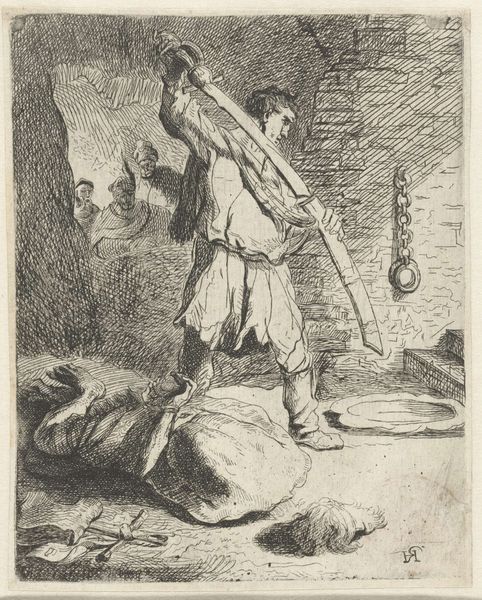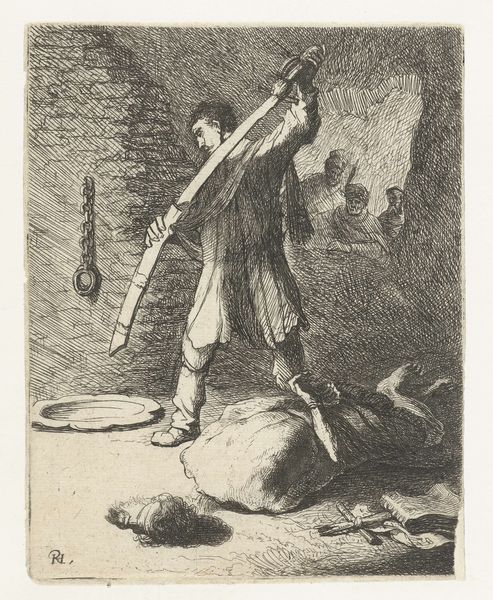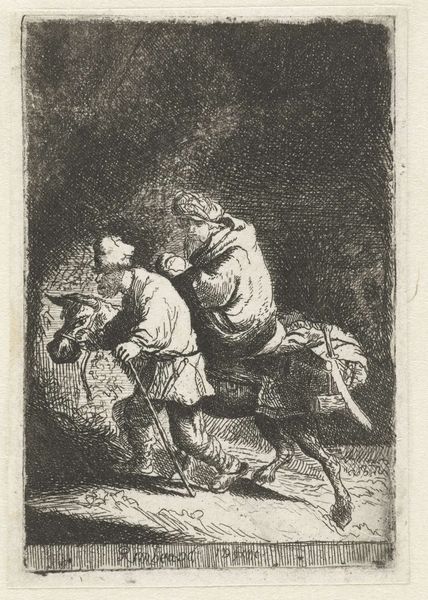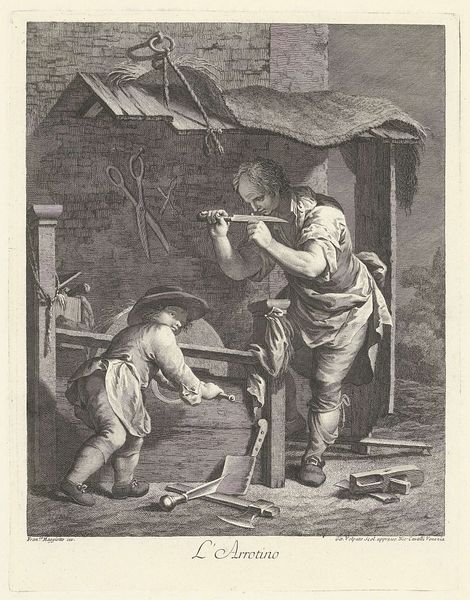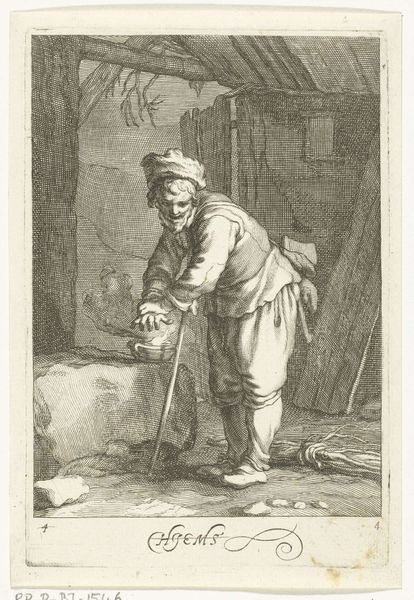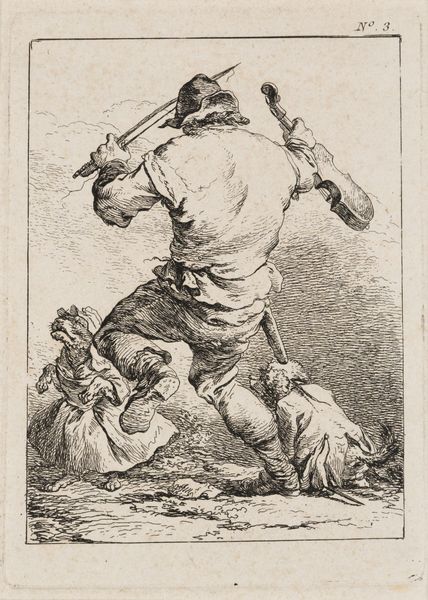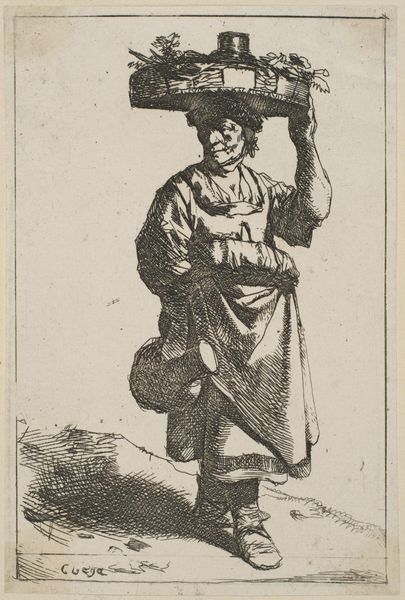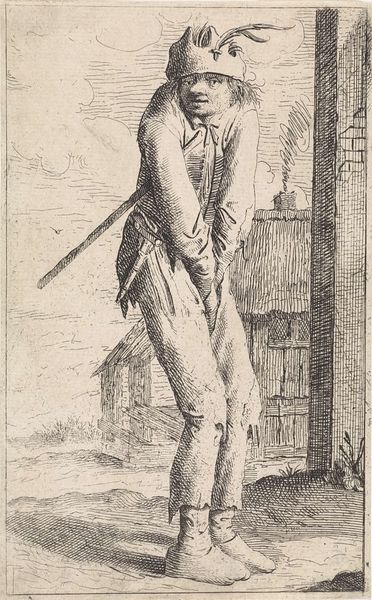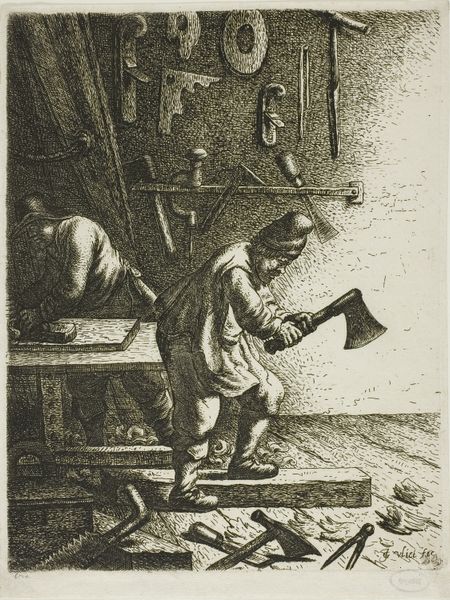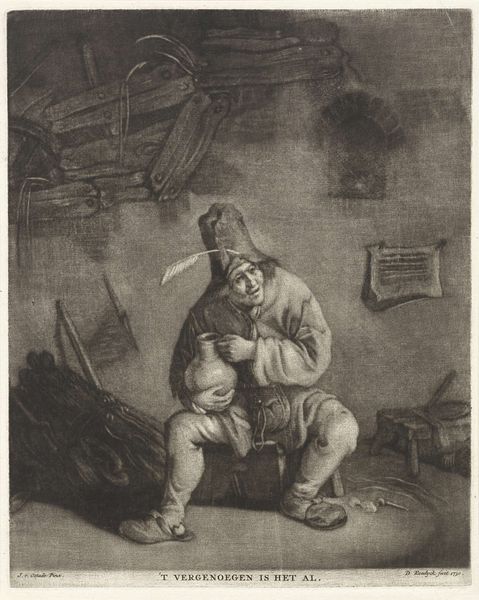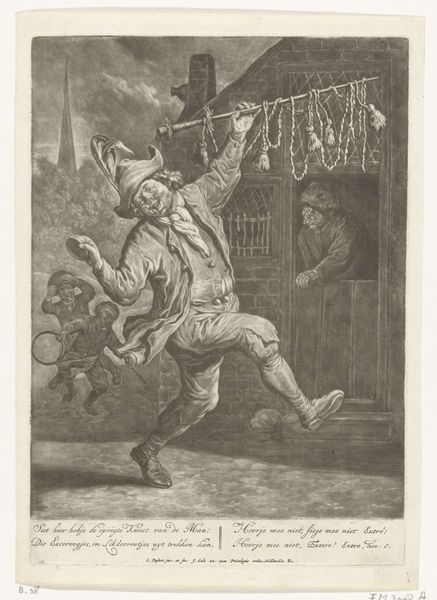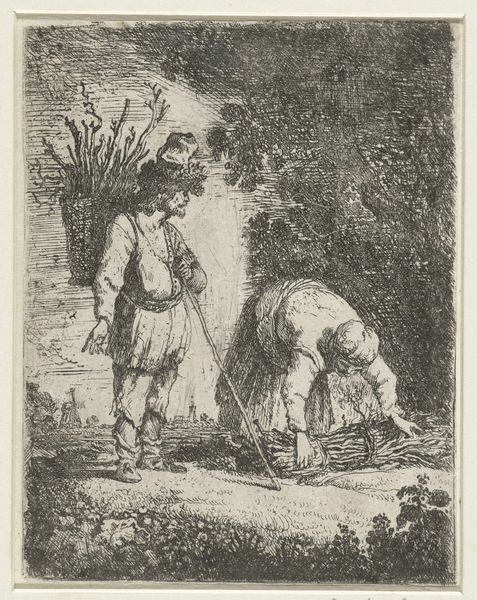
drawing, print, etching, ink
#
drawing
#
ink drawing
#
narrative-art
#
baroque
# print
#
etching
#
figuration
#
ink
#
history-painting
Dimensions: height 157 mm, width 123 mm
Copyright: Rijks Museum: Open Domain
Rembrandt van Rijn made this print of “The Beheading of St. John the Baptist” using etching, a process of working lines into a metal plate with acid. The starkness of the image comes from the directness of the method. Consider the labor involved; the work is built up line by line. Each mark is the result of carefully applied pressure on the etching needle, revealing the artist’s hand. Look closely, and you can see variations in the depth of the lines, indicating changes in pressure and angle. The way the scene is composed emphasizes the brutal nature of execution. Rembrandt used the etching process to investigate and reveal this tragic story. Although the print medium is often considered secondary to painting, here it is elevated through his craft. This piece reminds us that close attention to materials and making allows a deeper appreciation of an artwork's emotional and social content.
Comments
No comments
Be the first to comment and join the conversation on the ultimate creative platform.
